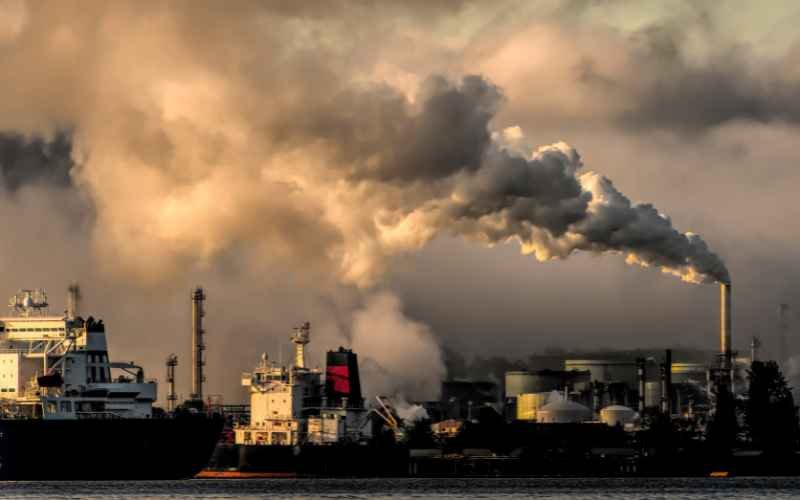Welcome to a city where every breath you take feels like a gamble, where the air you inhale is thick with toxins, and where the skyline is often obscured by a hazy smog. Welcome to Delhi, where the battle against air pollution wages on relentlessly, impacting the health and well-being of millions.

Understanding the Crisis:
Delhi, the vibrant nucleus of India, embodies a paradoxical reality: alongside its rich tapestry of life and culture thrives a pervasive and concerning issue of air pollution. But delving into the roots of this crisis unveils a multifaceted dilemma, demanding comprehensive comprehension.
Vehicular Emissions:
The incessant flow of vehicles on Delhi’s roads is a primary contributor to the city’s polluted atmosphere. With a burgeoning population and increasing reliance on automobiles, exhaust fumes laden with harmful pollutants saturate the air, exacerbating the situation.
Industrial Effluents:
Delhi’s industrial landscape, while integral to its economic vitality, also casts a shadow of pollution. The discharge of pollutants from factories and manufacturing units adds to the noxious mix, further compromising air quality and public health.
Agricultural Residue Burning:
The seasonal practice of burning crop residues in neighboring states blankets Delhi in a thick haze, especially during the post-harvest months. The smoldering fields not only release particulate matter but also elevate levels of harmful gases, enveloping the city in a toxic shroud.
Construction Dust:
The ever-expanding urban sprawl of Delhi is synonymous with ongoing construction activities. However, the dust and debris generated during these endeavors contribute significantly to the pollution burden, as fine particles permeate the air, posing respiratory risks to inhabitants.
The confluence of these factors forms a noxious amalgam, infiltrating every breath taken in the city. To address this crisis effectively, a holistic understanding of its diverse components is imperative. Only through such comprehension can meaningful solutions be devised to alleviate Delhi’s suffocating predicament.
The Health Toll:
The ramifications of Delhi’s polluted air extend far beyond mere statistics; they resonate on a deeply personal level, leaving an indelible mark on the lives of its inhabitants.
Exacerbating Respiratory Illnesses:
The polluted air in Delhi serves as a catalyst for respiratory ailments, aggravating conditions such as asthma, bronchitis, and chronic obstructive pulmonary disease (COPD). For individuals already grappling with these afflictions, the toxic air exacerbates their symptoms, leading to heightened discomfort and decreased quality of life.
Increasing Risk of Heart Disease:
Studies have underscored the link between air pollution and cardiovascular health, with pollutants like fine particulate matter and nitrogen dioxide predisposing individuals to heart diseases such as hypertension, coronary artery disease, and even heart attacks. The polluted air in Delhi thus poses a significant threat to the cardiovascular well-being of its residents.
Stunting the Growth of Children:
Children, with their developing respiratory systems and immune defenses, are particularly vulnerable to the adverse effects of air pollution. Prolonged exposure to polluted air can impede their lung function and hinder their growth and development, potentially impacting their long-term health outcomes.
Affecting Cognitive Function:
Emerging research has shed light on the cognitive implications of air pollution, linking exposure to pollutants with adverse effects on cognitive function and neurological health. In Delhi, where the populace is constantly exposed to high levels of pollution, the risk of cognitive decline and neurodegenerative diseases looms large, posing a threat to mental well-being.
Behind every statistic lies a poignant human story, a narrative of individuals grappling with the tangible consequences of inhaling the invisible yet lethal particles suspended in Delhi’s atmosphere. As the toll on health continues to mount, the urgency to address the city’s air quality crisis becomes increasingly apparent, emphasizing the imperative of concerted action to safeguard the well-being of its populace.
Policy Paralysis:
Amidst mounting evidence and fervent appeals for action, the response from policymakers often appears sluggish and inadequate, perpetuating a sense of policy paralysis in addressing Delhi’s air pollution crisis.
Band-Aid Solutions:
Policy measures such as the odd-even vehicle schemes and the adoption of cleaner fuels, while commendable in their intent, often fall short of addressing the root causes of the problem. These initiatives, though effective in the short term, resemble band-aids applied to a gaping wound, offering temporary relief without addressing the underlying systemic issues contributing to air pollution.
Holistic Strategies:
Tackling Delhi’s air pollution demands more than piecemeal interventions; it necessitates the formulation and implementation of holistic, long-term strategies. Such approaches must prioritize the health and well-being of citizens over short-term economic gains, addressing the multifaceted nature of the crisis through coordinated action across sectors.
Addressing Systemic Issues:
At the heart of Delhi’s air pollution crisis lie systemic issues spanning vehicular emissions, industrial pollution, agricultural practices, and urban development. Meaningful progress can only be achieved by confronting these structural challenges head-on, through comprehensive policies that foster sustainable practices and mitigate pollution at its source.
Prioritizing Public Health:
Central to any effective response to air pollution is a steadfast commitment to prioritizing public health above all else. Policymakers must recognize the profound impact of polluted air on the health and well-being of citizens, steering policy decisions towards safeguarding human health and fostering a clean and sustainable environment for future generations.
The Role of Citizens:
Amidst governmental inertia, citizens have emerged as frontline warriors in the relentless battle against air pollution, wielding the power of collective action and advocacy to drive meaningful change.
Advocating for Sustainable Urban Planning:
Citizens are increasingly vocal in their demands for sustainable urban development practices that prioritize clean air and environmental conservation. Through grassroots movements, public campaigns, and community engagement, they advocate for policies and initiatives that promote green spaces, pedestrian-friendly infrastructure, and efficient public transportation systems, thereby challenging the status quo of urban planning.
Adopting Eco-Friendly Lifestyles:
Individual actions play a pivotal role in combatting air pollution, as citizens increasingly embrace eco-friendly lifestyles characterized by reduced consumption, waste minimization, and the adoption of clean energy alternatives. By making conscious choices in daily activities such as transportation, energy usage, and consumption habits, individuals contribute to mitigating their carbon footprint and fostering a culture of sustainability.
Demanding Accountability from Authorities:
Citizens hold authorities accountable for their role in addressing air pollution, demanding transparency, accountability, and decisive action from policymakers and regulatory bodies. Through public pressure, advocacy campaigns, and civic engagement, they call for the enforcement of existing regulations, the implementation of stricter emission standards, and the allocation of resources towards pollution control measures.
Participating in Grassroots Initiatives:
Grassroots initiatives spearheaded by citizens play a crucial role in raising awareness, fostering community engagement, and implementing localized solutions to air pollution challenges. From tree planting drives and neighborhood clean-up campaigns to citizen science projects monitoring air quality, these initiatives empower communities to take ownership of their environment and effect positive change at the grassroots level.
Looking Ahead:
The path forward for Delhi is marked by formidable challenges, yet it remains illuminated by a glimmer of hope. With concerted efforts and collective determination, the city has the potential to emerge as a beacon of environmental stewardship, where clean air is upheld as a fundamental human right.
A City of Environmental Stewardship:
Delhi’s journey towards cleaner air hinges on its ability to embrace a vision of environmental stewardship, where the well-being of its inhabitants and the preservation of its natural resources take precedence over short-term gains. By prioritizing sustainability, conservation, and eco-friendly practices, the city can pave the way for a greener, healthier future.
Concerted Efforts:
Achieving this vision demands concerted efforts from all stakeholders, including policymakers, activists, civil society organizations, businesses, and every resident who calls Delhi home. It requires collaborative action, innovation, and a shared commitment to effecting meaningful change at all levels of society.
Empowering Communities:
Central to Delhi’s transformation is the empowerment of its communities, fostering a sense of ownership, responsibility, and agency in addressing air pollution and environmental degradation. By engaging residents in decision-making processes, amplifying their voices, and supporting grassroots initiatives, the city can harness the collective power of its people to drive sustainable progress.
Cultivating Hope:
While the challenges ahead may seem daunting, Delhi must cultivate a sense of hope and optimism for the future. Each step taken towards cleaner air and a healthier environment brings the city closer to realizing its full potential as a model of sustainable urban living. By nurturing hope and resilience, Delhi can overcome adversity and forge a path towards a brighter tomorrow.
In the journey towards cleaner air and environmental sustainability, Delhi stands at a crossroads, poised to chart a new course towards a greener, healthier future. By uniting in purpose and action, the city can transcend its challenges and emerge as a shining example of environmental stewardship for the world to follow.
Conclusion:
As the sun sets over the city skyline, cloaked in a veil of smog, there is a glimmer of hope on the horizon. The fight against air pollution in Delhi is not just about reclaiming the skies; it’s about reclaiming the right to breathe freely, deeply, and without fear. It’s about envisioning a future where clean air is not a luxury but a necessity, where the air we leave behind for future generations is not poisoned but pristine. It’s about realizing that the air we share knows no boundaries, and in its purity lies our collective well-being.
Top 20 FAQs about Breathing in the Chaos: Air Pollution Crisis in Delhi
- What causes air pollution in Delhi?
- Air pollution in Delhi stems from various sources, including vehicular emissions, industrial pollution, agricultural residue burning, and construction activities.
- How does air pollution affect health?
- Air pollution can lead to a range of health problems, including respiratory illnesses, cardiovascular diseases, stunted growth in children, and cognitive impairments.
- What are the main pollutants in Delhi’s air?
- The main pollutants in Delhi’s air include particulate matter (PM2.5 and PM10), nitrogen dioxide (NO2), sulfur dioxide (SO2), carbon monoxide (CO), and ozone (O3).
- What is the government doing to address air pollution in Delhi?
- The government has implemented various measures such as the odd-even vehicle scheme, the introduction of cleaner fuels, and initiatives to curb stubble burning. However, more comprehensive and sustained efforts are needed.
- How can individuals protect themselves from air pollution?
- Individuals can protect themselves from air pollution by staying indoors during peak pollution hours, using air purifiers, wearing masks, and adopting healthy lifestyle habits.
- Is it safe to exercise outdoors in Delhi?
- During periods of high air pollution, it is advisable to limit outdoor exercise, especially in heavily polluted areas. Indoor exercise or activities in less polluted areas are safer alternatives.
- What are the long-term effects of breathing polluted air?
- Long-term exposure to polluted air can lead to chronic health conditions such as respiratory diseases, cardiovascular problems, reduced lung function, and increased mortality rates.
- How does air pollution affect children?
- Children are particularly vulnerable to the effects of air pollution, which can impair their lung development, increase the risk of respiratory infections, and impact cognitive function and academic performance.
- What role do vehicles play in Delhi’s air pollution?
- Vehicles, especially diesel-powered ones, contribute significantly to air pollution in Delhi through emissions of nitrogen oxides (NOx), particulate matter, and other pollutants.
- Why is stubble burning a problem in Delhi?
- Stubble burning, practiced by farmers in neighboring states after the harvest season, releases large amounts of smoke and pollutants into the air, exacerbating Delhi’s air quality issues.
- Are there any natural remedies to mitigate the effects of air pollution?
- While natural remedies such as consuming antioxidant-rich foods and herbal supplements may provide some health benefits, they cannot substitute for measures to reduce exposure to polluted air.
- How does air pollution affect pregnant women?
- Pregnant women exposed to air pollution may face an increased risk of preterm birth, low birth weight, and developmental problems in their offspring.
- Can air purifiers help improve indoor air quality?
- Air purifiers can be effective in removing pollutants from indoor air, but their efficacy depends on factors such as the size of the room, the type of purifier, and the level of pollution.
- What can industries do to reduce their contribution to air pollution?
- Industries can adopt cleaner production technologies, improve energy efficiency, implement pollution control measures, and switch to cleaner fuels to reduce their emissions.
- How does air pollution in Delhi compare to other cities in the world?
- Delhi often ranks among the most polluted cities globally, with air quality levels exceeding those of many other major cities due to a combination of factors such as population density, vehicular emissions, and industrial activity.
- What steps can the government take to tackle air pollution in the long term?
- Long-term strategies to tackle air pollution may include investing in public transportation, promoting renewable energy sources, implementing stricter emission standards, and fostering sustainable urban development.
- How does indoor air pollution contribute to overall air quality in Delhi?
- Indoor air pollution from sources such as cooking fuels, tobacco smoke, and household products can contribute to overall air quality problems, especially in poorly ventilated homes.
- Is air pollution a year-round problem in Delhi?
- While air pollution in Delhi is typically more severe during the winter months due to factors such as stubble burning and weather conditions, it remains a concern throughout the year.
- What can tourists do to protect themselves from air pollution in Delhi?
- Tourists visiting Delhi can reduce their exposure to air pollution by staying in accommodations with air purifiers, avoiding outdoor activities during peak pollution hours, and using masks when necessary.
- How can citizens contribute to efforts to improve air quality in Delhi?
- Citizens can contribute to improving air quality by advocating for sustainable policies, reducing personal emissions, supporting clean energy initiatives, and participating in community clean-up efforts and tree planting campaigns.



